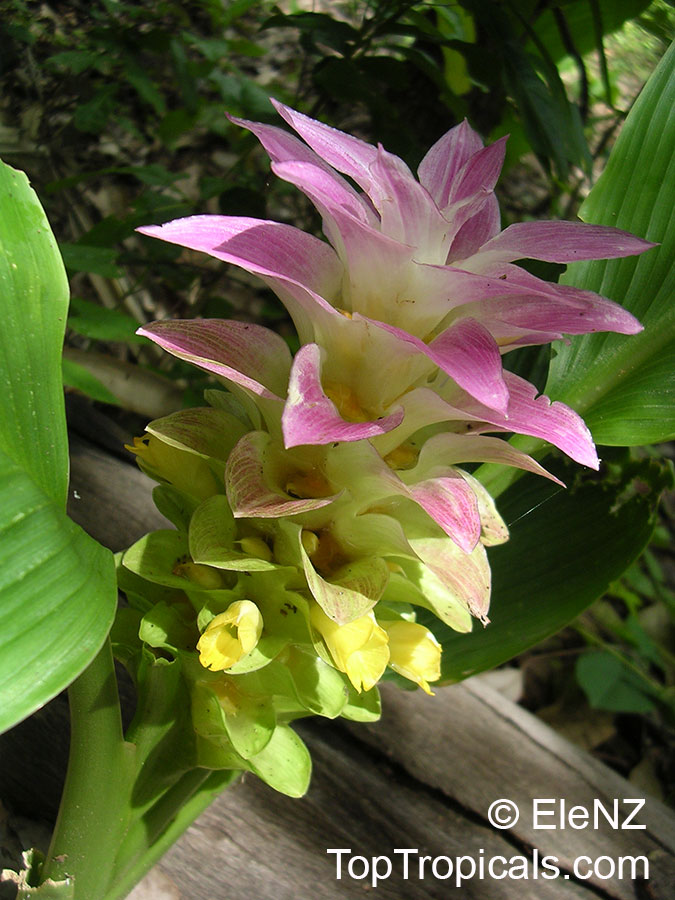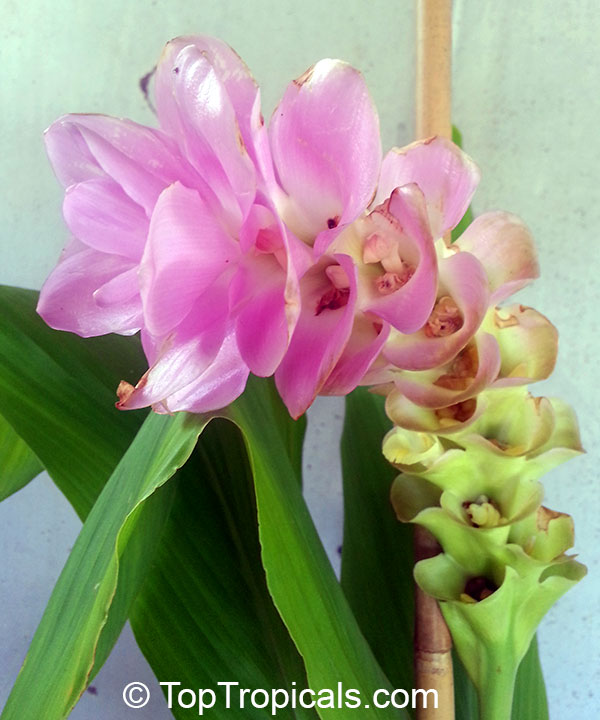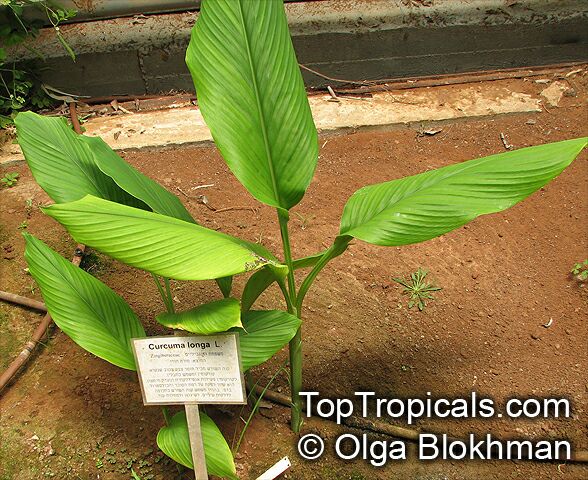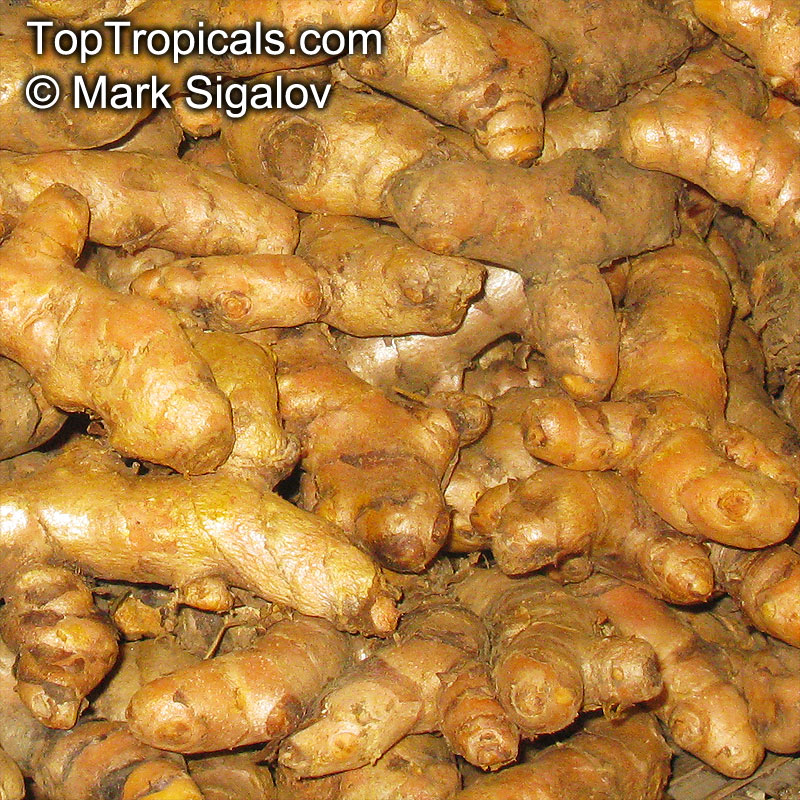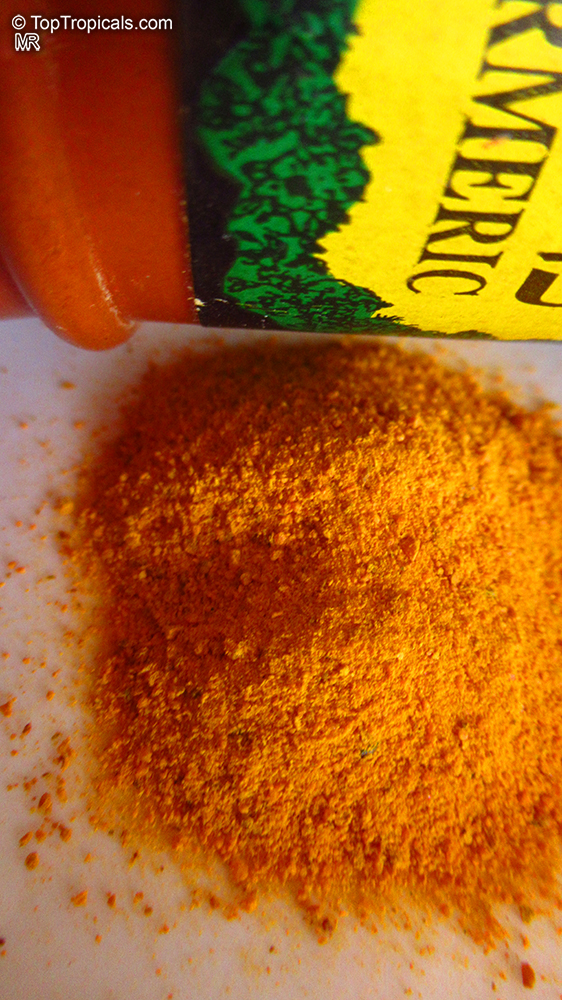Curcuma longa (Spice Turmeric)
Top Tropicals Plant Encyclopedia
Botanical name: Curcuma longa
Common names: Spice Turmeric, Longevity Spice, Indian Saffron, Tumeric
Family: Zingiberaceae
Origin: Asia









Turmeric (Curcuma longa) is a small plant that grows to a height of 2-5 ft and has a deciduous nature. Native to Asia, it has been used for centuries as a medicinal as well as a culinary herb. It has pink flowers and is known as an ethnomedical plant as it has been used in traditional folk medicine as a cure for several ailments. Curcuma longa is also used as a spice or herb, and is a common ingredient in curry powder.
This plant requires full sun for optimal growth, however it can also thrive in semi-shade. It needs regular watering. In can be grown in USDA Zones 8-11. In cold regions, it can be grown in a pot.
The health benefits of turmeric have been attributed to its active component, curcumin, found in the root. This ingredient has anti-inflammatory and disinfecting properties, and has been used traditionally to treat cuts and abrasions, as well as certain internal diseases. Curcumin is believed to be particularly beneficial when taken with black pepper, as piperine in black pepper boosts the effectiveness of curcumin.
Apart from its medicinal uses, turmeric is also used in food and textile dyeing, as an additive to foods like butter, mustard and cheese, as a natural ant deterrent, and as a seasoning in Asian dishes. It is found in its powdered form and is often mis-spelt as Tumeric.
Similar plants: Curcuma longa (Spice Turmeric)
This plant is deciduous through winter-spring.
Recommended Fertilizer: SUNSHINE Robusta - Rapid Growth Booster
